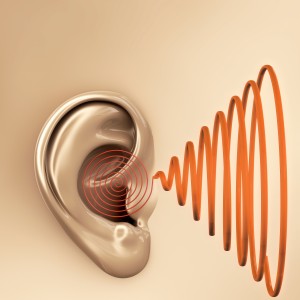Inner Ear Involvement in Systemic Sclerosis May Cause Audiovestibular Abnormalities
Written by |

 Results from a recent study published in the journal The Egyptian Rheumatologist provide new evidence of inner ear involvement in Systemic sclerosis (SSc) causing audiovestibular abnormalities.
Results from a recent study published in the journal The Egyptian Rheumatologist provide new evidence of inner ear involvement in Systemic sclerosis (SSc) causing audiovestibular abnormalities.
Systemic sclerosis (SSc) is an autoimmune connective tissue disease characterized by fibrosis mainly in the skin, vasculopathy with Raynaud’s phenomenon (an almost universal symptom), and the presence of autoantibodies.
Vasculopathy is a major factor in the symptoms of SSc, prompted by an autoimmune insult triggered by an unknown factor that causes inflammatory processes and ultimately fibrosis. There is some evidence of hearing loss in other autoimmune diseases, mainly caused by cochlear-vestibular abnormalities, and with vasculitis as the most accepted hypothesis. The vestibular system comprises two types of sensory organs — the semicircular canals and the otolith organs (the saccule and utricle). The otolith organs are delicate structures are liable to fibrosis in SSc, which in turn may lead to otolith dysfunction.
Vestibular Evoked Myogenic Potentials (VEMPs) are short-latency electromyograms evoked by high-level acoustic stimuli recorded from surface electrodes over the tonically contracted sternocleidomastoid (SCM) muscle, as they are used to evaluate otolith function. However, there is no study that evaluated otolith organ function as a part of vestibular system.
[adrotate group=”3″]
In order to assess otolith vestibular function in patients with SSc and to correlate these findings with age, disease duration and different clinical parameters among patients with SSC, in their study titled “Otolith function assessment in patients with systemic sclerosis,” Doaa Ahmad Gamal El-Din Teleb from the Department of Audiology at Cairo University and colleagues evaluated 30 patients with SSc and 30 age and sex matched controls. All patients had otolith function assessment using Vestibular Evoked Myogenic Potentials (VEMP) and auditory assessment done using pure tone audiometry (PTA), speech audiometry and tympanometry.
Results of the Auditory assessment revealed that 36.6% of SSc patients had abnormally decreased hearing threshold and bilateral sensorineural hearing loss (SNHL). Significantly poorer hearing threshold was found in patients compared to the control at frequencies 500, 1000, 2000, 4000 and 8000 Hz. Hearing loss was mild in 4 patients, moderate in 6, and moderate to severe in one patient. A total of 80% of the patients had abnormal VEMP response. Bilateral delayed P13 and N23 latencies were found in 58.3% of cases, bilateral absent VEMP response in 25% and unilaterally absent in 16.7% of cases. The P13 and N23 latencies were prolonged in Ssc patients compared to the controls.
Audiovestibular symptoms included hearing loss in 43.3%, vertigo in 60%, and tinnitus in 20%. Skin thickening was more frequent in those with abnormal VEMP. Those with hearing loss were older and had longer disease duration and increased frequency of digital pitting and ulcers in comparison to those with normal hearing.
Based on the results, the researchers indicate that audiovestibular dysfunction in SSc patients is overlooked although being frequent, yet mostly asymptomatic. The team suggests that regular audiovestibular assessment using pure tone audiometry (PTA) and Vestibular Evoked Myogenic Potentials (VEMP) is highly recommended in SSc patients, in addition to other vestibular tests that help detect abnormalities in the semicircular canals of the vestibular apparatus. Further research on a larger number of SSc patients is recommended to confirm these study results.





